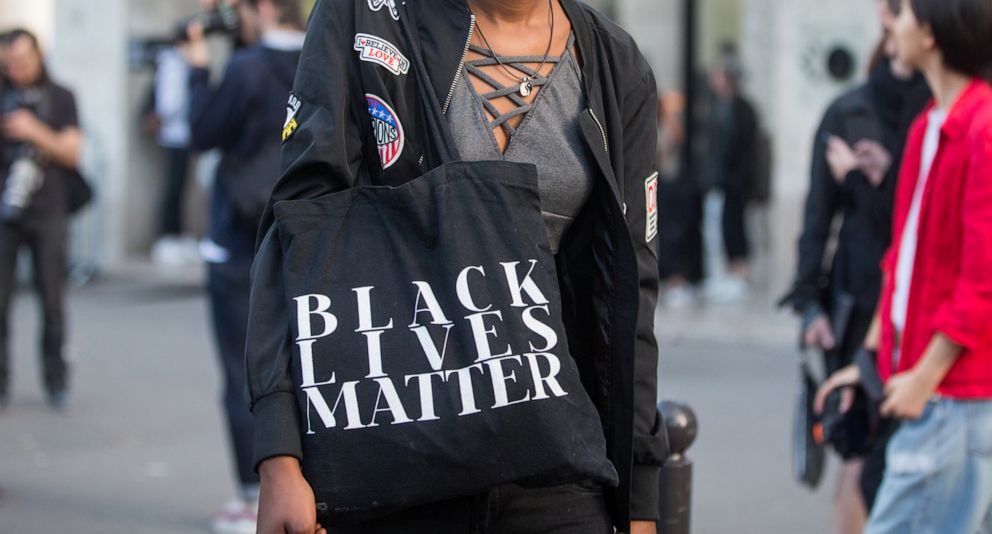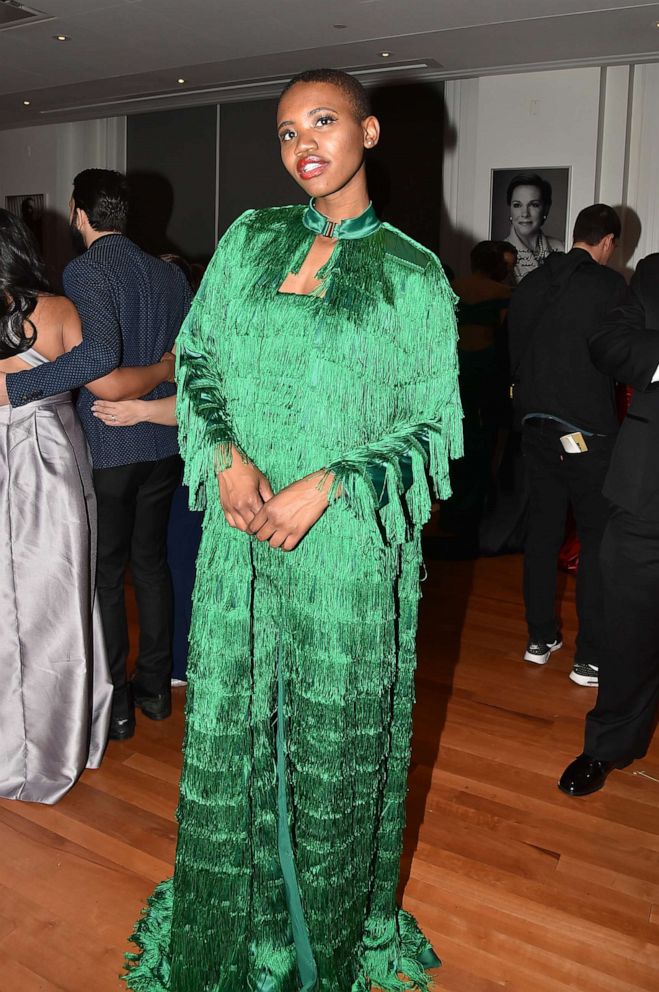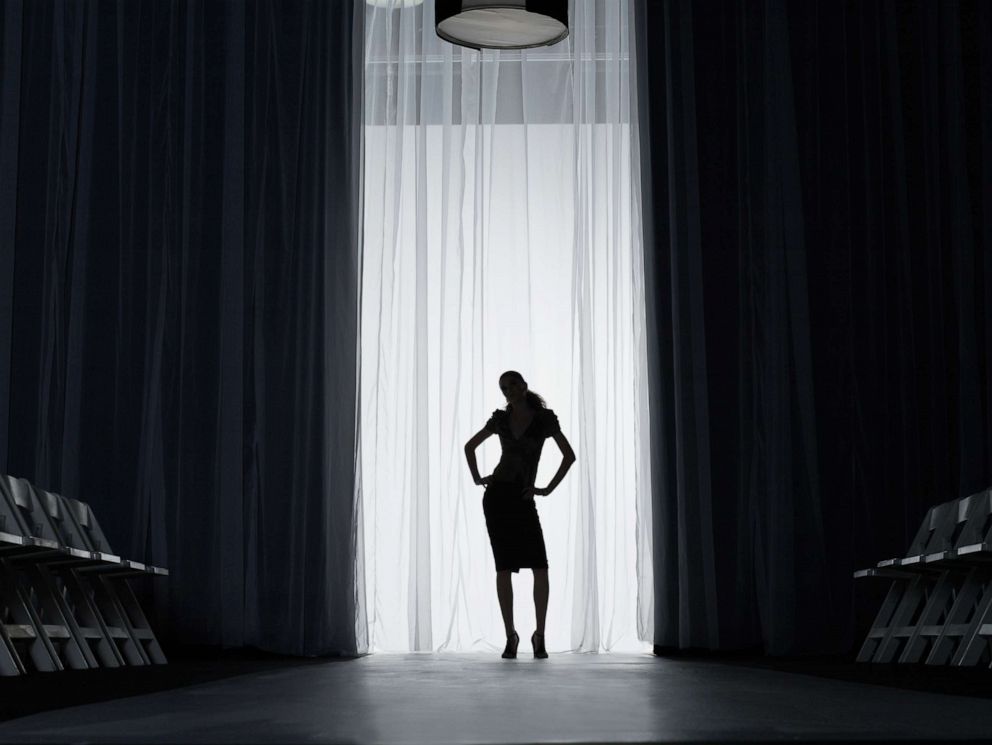Models accuse fashion industry of 'falsely portraying inclusivity' amid BLM
Over the course of the year, the fashion world has faced two momentous hurdles. The first involved transitioning from the physical runway to the digital, due to the coronavirus pandemic. There, the industry succeeded, and even broke ground by hosting the first virtual Paris Haute Couture Fashion Week in July. But the second hurdle has proven more difficult as it involves making up for decades of cultural monotony and lack of acceptance.
In the eyes of many -- including models, designers, stylists and modeling agency bosses -- fashion has been neglecting Black, Indigenous and people of color (BIPOC) for, essentially, its entire history. But amid the Black Lives Matter movement, sparked by the death of George Floyd, the industry has gone into overdrive to prove this isn't true.
On social media, fashion brands and agencies have been filling their feeds with photos of models of color, but "it's all a front," Catalina Girald, the founder of sustainable underwear brand Naja told ABC News.
"There are two sides to it. People are doing it because the world expects it of them and because they need to generate sales," she said. "But I think in the process of doing it, things actually will change. While the motivation isn't what we would like it to be, I think it's the only way to get things to happen."
Girald, who is Latina and has a fully diverse staff, was recently tossed into the spotlight due to the launch of her "Nude For All" underwear line, which includes seven shades of nude for white, Black women, and everyone in between. She and her company are the exception in the fashion industry, where models say most on-set teams are entirely white, and clothes are rarely made to flatter nonwhite bodies.

BIPOC models face problems on set
"I've worked for brands that show Black, white and Asian models in ads, but the whole production team is white," said Jessi Melani, 23, of Natural Models L.A. "These brands want to represent these cultures, but by having an all-white team they are falsely portraying inclusivity."
She added that if a brand has five models in an ad, that means they had five opportunities to represent diversity, and that includes race, size, age, sexuality and disabilities. And if there aren't also people of color leading the set, then the brand isn't as inclusive as it claims to be.
T-Age Anadi, 26, a Black model signed to Wilhelmina, said models of color, on top of having a harder time getting jobs in high fashion, have to deal with makeup artists, hair stylists and photographers that don't know how to work with their coloring or hair texture.
"To be inclusive is not just to have a Black model, but also a makeup artist that doesn't make you look ashy, or a hair stylist that knows how to deal with thick, curly hair, or a photographer that knows what lighting looks good on your skin," she said.
Shannon Rodriguez, a Puerto Rican and Irish makeup artist in New York City said she's had experiences where BIPOC models sat in her chair and, "automatically handed [her] a bag of makeup," thinking she wouldn't have the right shades for them. "This breaks my heart every time," Rodriguez said. "In my opinion, you are not a professional makeup artist if you can't address all skin types and tones in your chair."

"Inclusion does not equal tokenism," Anadi said. "Hiring a Black model to cross 'diversity' off your list of things to do isn't enough. We need to see more makeup artists, photographers, creative directors, casting directors. In my career, I have never been on set for a client where the photographer was Black. I would love to see that change."
This month, Vanity Fair published the first cover photo taken by a Black photographer for the magazine, featuring Viola Davis. Similarly, Vogue Mexico published a cover featuring the first Indigenous model from Oaxaca ever to be shown on their pages. This all screams progress, but models say that behind the scenes, things are still not there.
Melani said Black models are often asked to spend extra time doing their own hair at home -- without pay -- so that hair stylists don't have to deal with it when they come in. "White models get extensions put in at no cost," she said, "and they get paid for the time they spend in the chair."
Katie Willcox, the founder of Natural Models, said that in a meeting with her team about racism, following the BLM protests, she became aware of the issues Black models have faced with hair and makeup. Now, she said she's "working with clients to ensure they have makeup and hair artists on set that are experienced working with various hair textures and skin tones." She added that a big part of the reason most hair and makeup artists don't know how to work with models of color, is because Black faces have only been truly welcomed in the fashion industry "in the last five years."
A model signed to Willcox's agency, who asked to remain anonymous, said models of color see the company's recent claims about understanding and supporting Black talent as a "performance." She said that of the 80 or so models signed to the agency, only eight are of color, and all of them are either "mixed or light-skinned and with curly hair -- because apparently that's what white people think all Black girls look like." She said that in the Zoom meeting about race that Willcox held for the team earlier this year, BIPOC models suggested different ways in which the agency could improve diversity, but, despite trying to continue the conversation and push for real change, they did not heard back from the executives for months.

An Indian model signed to Ford Models, who asked to remain anonymous for fear of retaliation, said she thinks the industry has become more accepting in the last two years, but due to BLM, the past few months have put more pressure on brands and agencies to appear inclusive.
"Most of the time they're just looking for a token Black girl. Forget about having a plus-sized model of color," she said, adding that as a brown woman, "I definitely feel like I'm being used as a model to start the diversity conversation."
IMG Models assured, in a statement to ABC News, that it is taking steps to "further diversify our employee base" to "become better allies" and create a positive change in the fashion industry. Furthermore, Ivan Bart, the company's president, said the agency now supports Donate My Wage, an online donation platform, created by their supermodel client Joan Smalls, which funds organizations advancing racial equality and justice.
Carole White, the CEO of Premier Model Management, a U.K.-based modeling agency, said they represent models from all over the world (including, Kenya, Nigeria, Sudan, Ethiopia, China, Korea, Nepal, India, Australia and America) and as an owner, she has always been vocal "about the need for the fashion industry to be more inclusive." It baffles her that "a country as diverse as Great Britain has been so slow in the industry to embrace all races."
Anadi said that while many agencies boast about having models from different countries and backgrounds, the ratio on set is often way off, and looks like "four Black girls and 100 white girls."
"I remember when I was looking for representation a while ago, I went to an agency and they complimented me on my look and measurements, but told me, 'We already have one of you.' Making light of the situation, I asked them, 'Well what if she gets sick?'" Anadi recalled.
Essence Taylor, 25, of Q Models, said she's starting to notice an increase in her bookings, which she credits to the BLM movement and brands' eagerness to preserve their relationships with their Black audience. "It's something that I've even joked about with other models who also noticed their bookings and castings increasings. But we all wonder how long it's going to last," she said.
So, how are things changing?
Most models ABC News spoke to agreed that regardless of brands' reasons for hiring BIPOC models for their campaigns during this time, things in fashion will start to change -- not because racism will suddenly cease, but because models of color are finally speaking up.
Hannah Jowitt (head of the women's division) and Joe Tootal (head of the men's division) of Models 1, Europe's largest modeling agency, admitted that -- though their staff is 70% white -- they always regarded themselves as "non-racist, but as a result of BLM, we had to ask ourselves the question: Are we anti-racist? To be honest, the short answer was no."

Luckily, they've been proactive about making changes, and recently set up a committee of five employees to help tackle six goals, including developing a mentoring program that focuses on students from disadvantaged and underrepresented communities, introducing bias training and education for staff, signing The Race at Work Charter, publishing an Equal Opportunities Policy and sourcing makeup professionals to address and resolve BIPOC models' concerns on set.
Nella Ngingo, a 26-year-old model from Burundi, represented by Paparazzi Model Management, said that now, the real question is: Will white-owned powerful fashion brands and magazines follow in bringing nonwhite voices to the decision-making table?
"I hope this is a continuous discussion and that it doesn't just become another trend for a season," she added.
Vanity Fair and Wilhelmina did not respond when ABC News reached out for comment.




